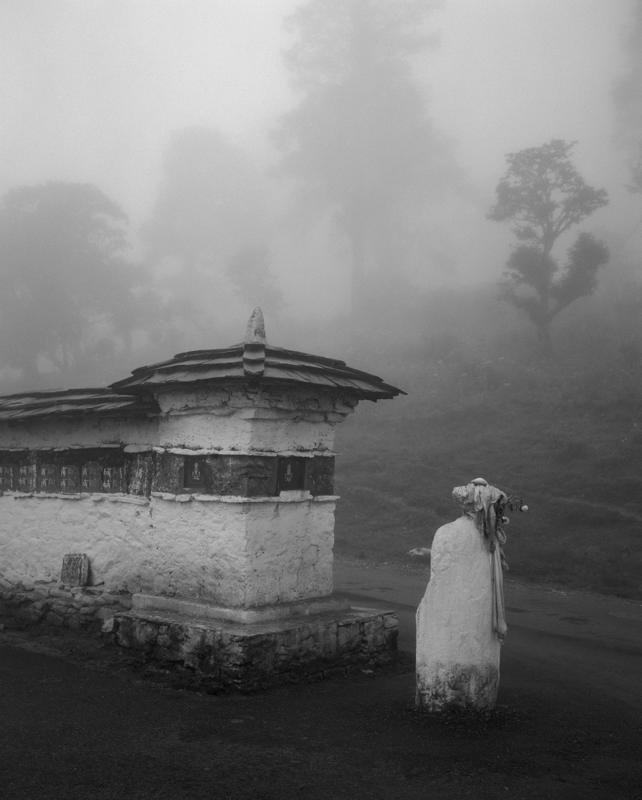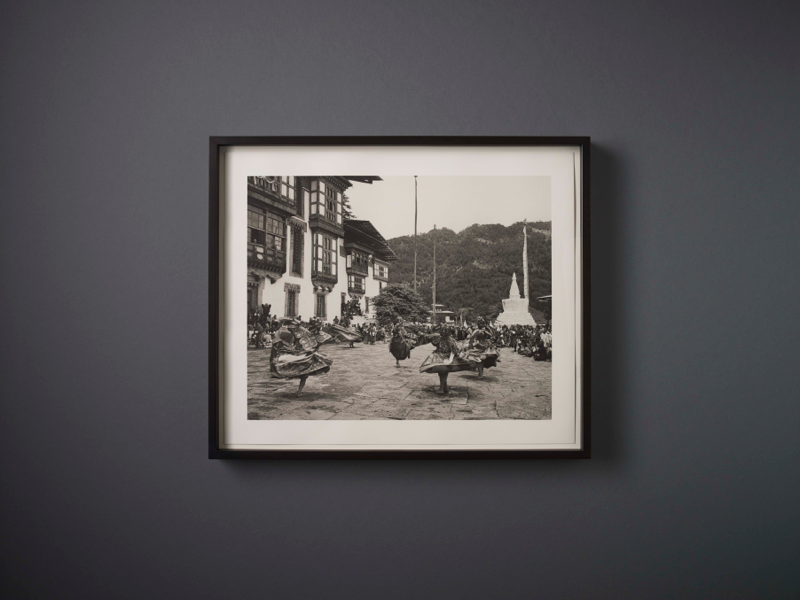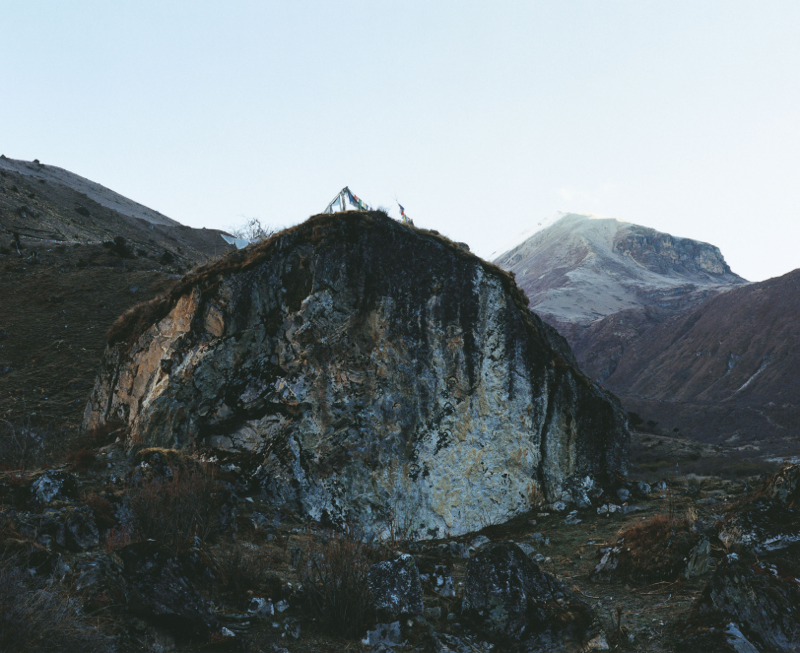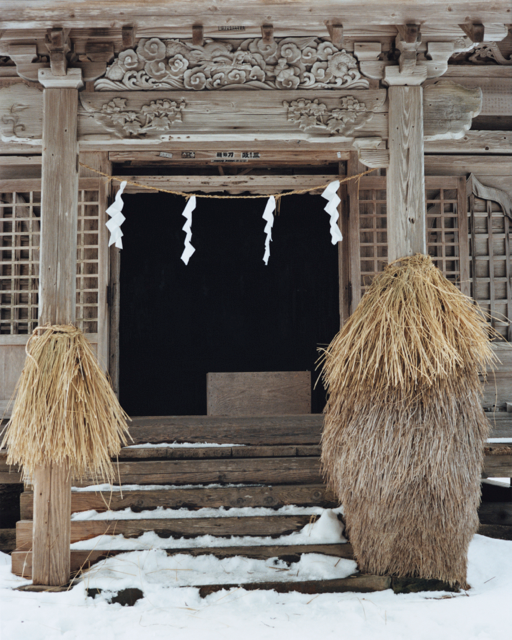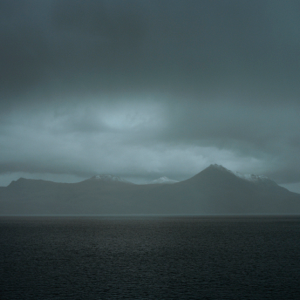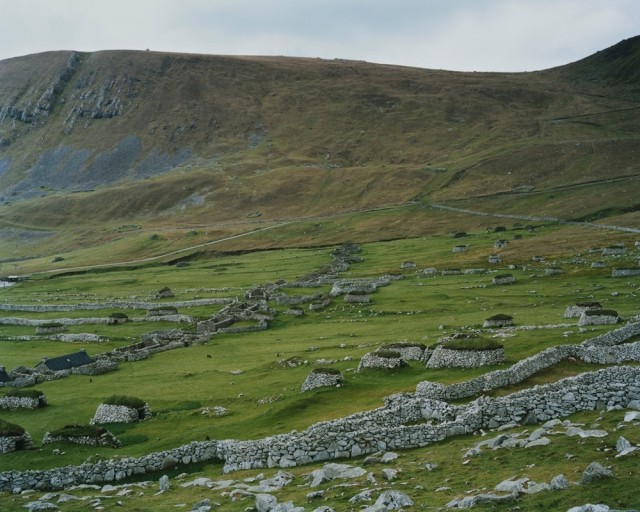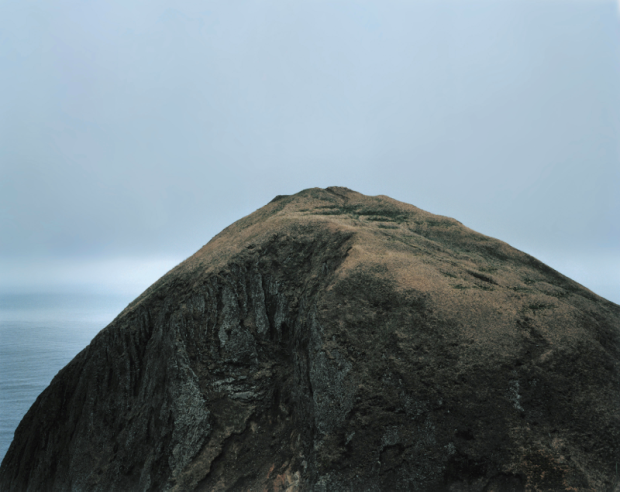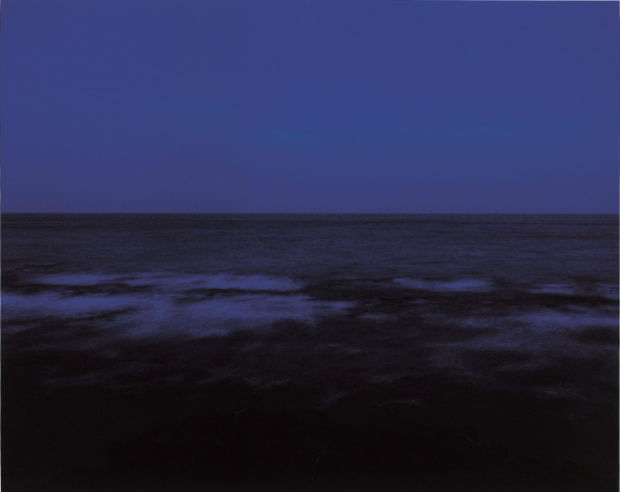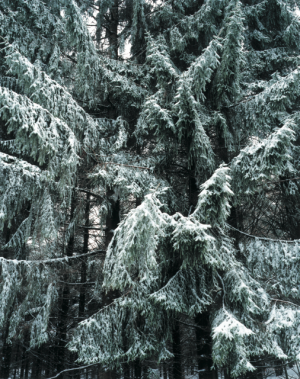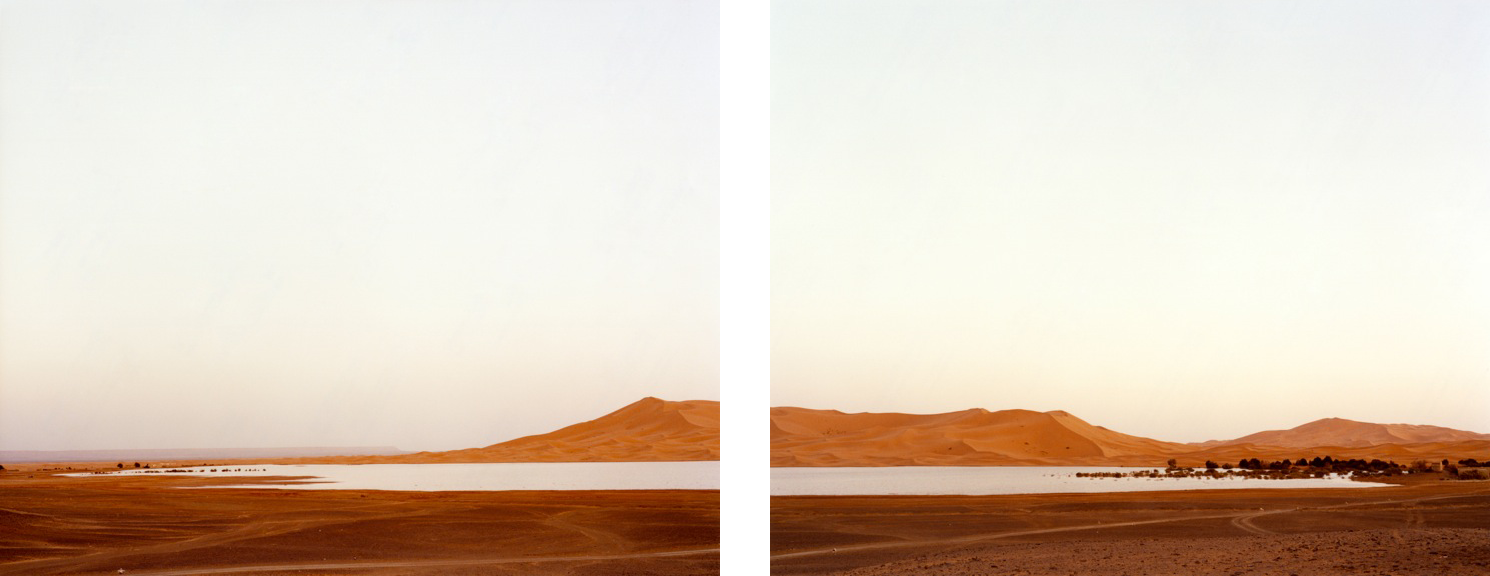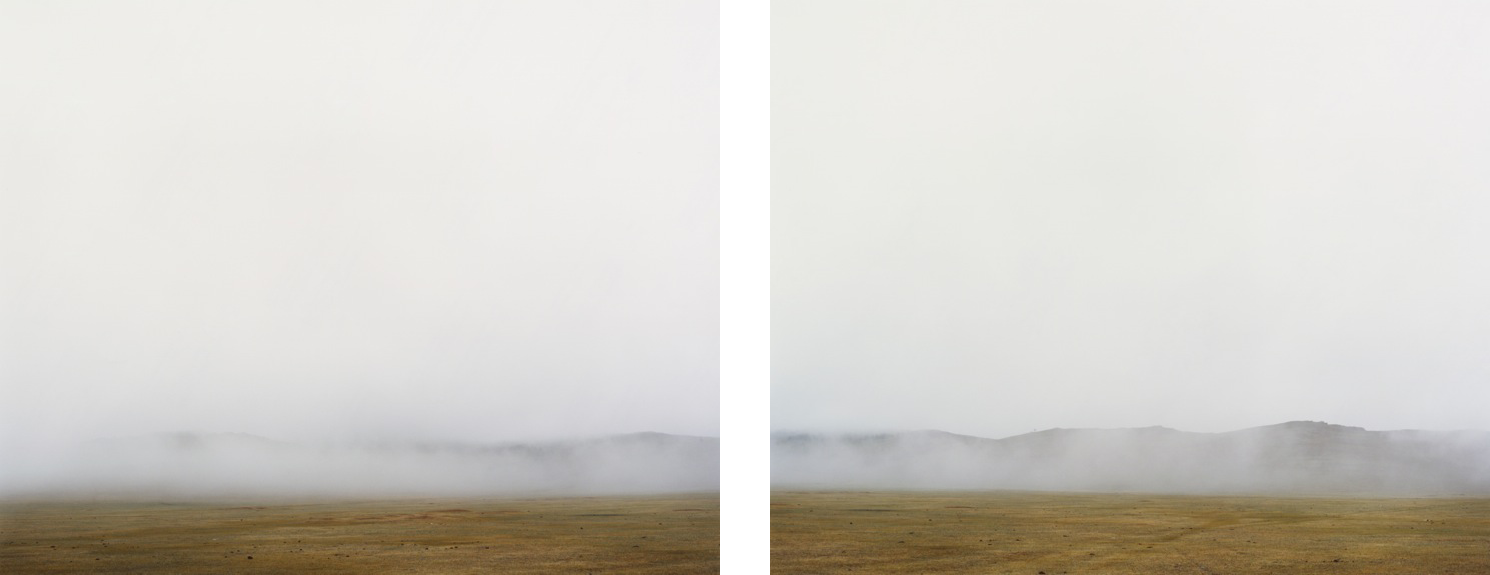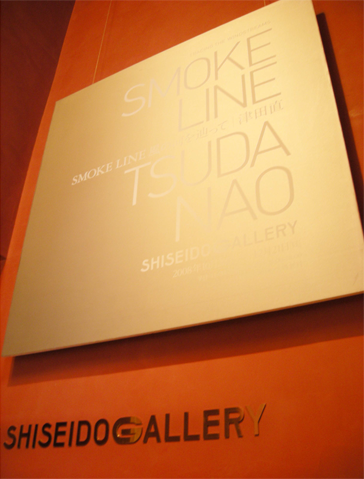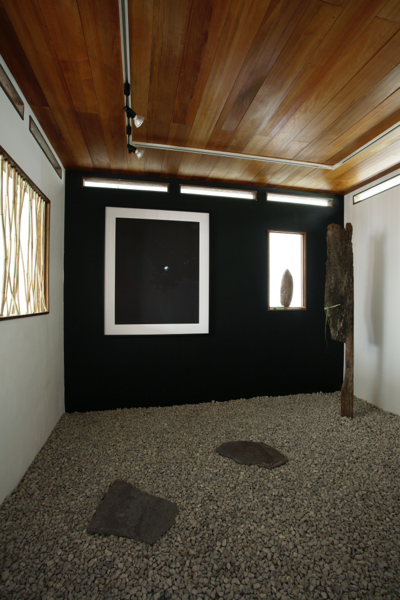“art news”ページにて、映画「大いなる沈黙へ―グランド・シャルトルーズ修道院」について対談記事が掲載されています。
対談は、写真家の石川直樹さんとの収録です。
雑誌の詳細は下記サイトよりご覧頂けます。
『芸術新潮』(2014年8月号) http://www.shinchosha.co.jp/geishin/
ブータン王国はチベット仏教を国教としているヒマラヤ山麓に佇む小国。
その大きさは九州くらいだと喩えられることがあるが、思いの他 その土地は広く感じられる。神仏のみならず自然界に対しても敬意を表するゆえに、山へトンネルを掘るようなことをすることなく、いまなお人々は地形に沿って往来する日々を送っている。だからブータンでは時間が緩やかに流れ、谷間のように深い信仰を今に受け継ぐことができたのだろう。
四度に渡り旅をしたブータンでは、国際空港のあるパロの町を玄関口に、首都であるティンプー近隣の寺院を巡り、北部へと連なる山道では、遊牧民と共に聖山を拝みながら歩んだ。さらに東へ向かい古刹の点在する中央ブータン・ブムタン地方を訪ねた。四季を通じて催されるツェチュ祭では、僧侶を中心とした仮面舞踊が繰り広げられ、人々の篤き信仰心に触れた。 (「REBORN (Scene 2) -Platinum Print Series」展@Taka Ishii Gallery Photography / Film プレスリリースより、津田直テキスト)
The kingdom of Bhutan is a small Tibetan Tantric Buddhist nation standing at the foot of the Himalaya Mountains. It is said that Bhutan is comparable to Kyushu in size, but it feels surprisingly larger. As its people revere not only deities and Buddhas but also the natural world, the production of such an invasive structure as a mountain tunnel is out of the question. In Bhutan, people continue to travel according to the natural topography. Time, therefore, passes gently in Bhutan; Tibetan Tantric Buddhist beliefs, deep as ravines, can be passed down through the generations here. I traveled to Bhutan four times. I arrived each time in Paro, where the international airport is located, and visited the temples in Thimphu. I then traveled on mountain trails leading north and worshipped holy mountains with nomadic peoples. I also traveled to the Bumthang district to visit its many ancient temples. During the Tshechu festivals, held in all four seasons, monks performed masked dances. I was moved by the devotion of the Bhutanese people. (From the press release of Taka Ishii Gallery Photography / Film “REBORN (Scene 2) -Platinum Print Series”, text by Nao Tsuda)
2010年より始まった「REBORN」シリーズは、世界で唯一チベット仏教を国教として守り伝えるブータン王国を撮影地としています。古くから神仏や自然界への畏敬の念が培われ、宗教が人々の生活に深く根差すこの地で、津田は仏教の原点や信仰の在り方について探求し続けてきました。チベット仏教で 信じられている輪廻転生を意味する「REBORN」と名づけられた本シリーズには、ブータン各地に点在する数々の寺院や僧院、その内奥に暮らす僧侶たち、繰り広げられる宗教的な祭りなど、ヒマラヤの厳しい自然に寄り添うように何世紀にも渡り守られてきた信仰と伝統の姿が写し取られています。 (「REBORN (Scene 2) -Platinum Print Series」展@Taka Ishii Gallery Photography / Film プレリリリースより)
The “REBORN” series, which Tsuda began in 2010, is shot in Bhutan, the only Tibetan Tantric Buddhist nation in the world. Tsuda has explored the origin and contemporary practice of Buddhism in Bhutan, a place where religion is deeply rooted in people’s lives and there is a tradition of reverence for deities, Buddhas and the natural world. This series takes its title from the Tibetan Tantric Buddhist belief in reincarnation, and the images here document the practice and tradition of this religion, which has been practiced over centuries in Bhutan in close proximity to the harsh natural conditions of the Himalayas. Tsuda has captured Bhutan’s many temples and monasteries, along with their monks and the religious festivals and rituals that are practiced inside them.
(From the press release of the exhibition “REBORN (Scene 2) -Platinum Print Series” at Taka Ishii Gallery Photography / Film)
東北地方は日本列島の最大の島、本州の北東部を占める地域で、青森県、岩手県、秋田県、宮城県、福島県の6県からなる。気候的にはやや寒冷だが、 海、山、川、森など美しく豊かな風土に恵まれている。日本に古代人が定住し始めた約15000〜3000年前の縄文時代には、独特の縄目模様の土器で知られる縄文文化がこの地域を舞台に花開いた。だが、西方の奈良や京都に政治や文化の中心が移ると、東北は遅れた未開発の地域として中央政権の支配下に置かれる。それでもこの辺境の地には、縄文文化の伝統を受け継ぐ生命力あふれる精神文化がずっと保ち続けられてきた。
その東北地方を中心に、 2011年3月11日にマグニチュード9.0という大地震が襲った。死者・行方不明者あわせて2万人に迫るという大きな被害を出したこの大震災と、直後の福島第一原子力発電所の危機的な事故については、多くのメディアで報道され、東北の県や都市の名前も耳に馴染んだものになった。だが、東北の気候・風土・ 歴史、そしてそこで人々がどんな暮らしをしているかについては、ほとんど知られていないのではないかと思う。
本展はその東北を撮影した 10人(9人+1組)の写真によって構成される。1950〜60年代の農村を撮影した千葉禎介、小島一郎、東北各地の民俗儀礼や祭りなどを追った芳賀日出男、内藤正敏、田附勝、自らの個人史と故郷の光景を重ね合わせる大島洋、畠山直哉、東北の美しい自然にカメラを向ける林明輝、縄文時代の遺跡を通じて日本人の精神の起源を探る津田直の作品、そして伊藤トオルをリーダーに、宮城県仙台市の「無名の風景」を集団で撮影した「仙台コレクション」のシリーズである。 (国際交流基金 巡回写真展「東北—風土・人・くらし」案内状、飯沢耕太郎テキストより)
Tohoku is the northeastern section of Honshu, the largest island in the Japanese Archipelago, and is divided into six prefectures: Aomori, Iwate, Akita, Yamagata, Miyagi, and Fukushima. Although it has a rather cold climate, it is blessed with a beautiful and bountiful natural environment of seas, mountains, rivers, and forests. Is is also known as a center of the Jomon culture, which was developed by some of the first people living in Japan. Known for the flame-like forms of its pottery, this culture flourished in Tohoku between 15000 and 3000 years ago. When the center of political power and culture shifted to Nara and Kyoto in western Japan, Tohoku was placed under the rule of the central government and regarded as a backward and primitive region, but this magical area maintained a vital spiritual culture that preserved the Jomon sprit.
On March 11, 2011 an earthquake of magnitude 9.0 struck Japan, and the worst damage was concentrated in the Tohoku region. The impact was devastating. It left 20,000 people dead or missing and caused the unprecedented unclear accident at No.1 Fukushima Nuclear Power Plant. The media coverage of the destruction made many people familiar with the names of Tohoku cities and prefectures, but few are likely to have a broad knowledge of other aspects of the region – its climate, natural and cultural environment, history, way of life, or people.
This exhibition is composed of photographers’ of the Tohoku taken by nine individual photographers and one photographers group. Teisuke Chiba and Ichiro Kojima photographed Tohoku in the 1950s and 1960s. Hideo Haga, Masatoshi Naito, and Masaru Tatsuki have recorded festivals and folk religious rites throughout the region. Hiroshi Oshima and Naoya Hatakeyama have combined their personal histories with the landscapes of their home regions. Meiki Lin turned his camera toward the beautiful natural environment. Nao Tsuda searched for the source of the Japanese spirit in relics and artifacts of the Jomon period. A group of photographers led by Toru Ito have created the Sendai Collection, a series of photographs of anonymous scenes in Sendai, Miyagi prefecture. (From the invitation of the exhibition “TOHOKU Though the Eyes of Japanese Photographers” by Japan Foundation, text by Kotaro Iizawa)
嵐が去った後 偶然発見された古代の住居跡が在ると聞き向かった
途中ストーンサークルを横断する時 真ん中に立ち 声を放つと
空気が膨らみ 波紋のように響き渡り 思わず後ろを振り返った
果てなき時間と戯れても 辿り着ける場所ではなかった
雨が降りはじめ 屋根のない家に飛び込んだ
水が土に染み込む音だけが道標となり 身体は運ばれてゆくようだった
組石の窓のそとに今は白い海が見える
来た道はもう遠くの線でしかなかった
足元の渦巻模様が階段の螺旋と重なり 円環は光の塔になっていった
(制作ノートより)
After a storm, I headed for the remains of ancient dwellings which were said to have been discovered accidentally.
On the way, while crossing the stone circle, I stood at the center and raised my voice.
The air seemed to have expanded, echoing like spreading ripples, and I could not help looking back.
No matter how long I spent my time, it was impossible for me to reach my destination.
It had started to rain, and I jumped into a roof-less dwelling.
I could only hear the sound of water soaking into the ground, and I felt as though my body was being washed away.
Now, I can see the white sea outside the stone assembled windows.
The path I took was already nothing more than a far distant line.
Whirling patterns at my feet, overlapped with spiral staircases, and the stone circle had become a shining tower.
(From a production note)
【 津田直 × 太田菜穂子 トークイベント開催 】 日時:2014年7月26日(土) 17:00~18:00 会場:Gallery 916 WEB:http://gallery916.com
916のアソシエイトキュレーターである太田菜穂子さんと、作家の津田直さんをゲストに迎えるギャラリートークです。
人々の気配に触れ、不可視の世界を写真を通し翻訳していく、津田さんならではの世界観や視点について伺います。本展で発表している3シリーズそれぞれのエピソードや撮影秘話など、この機会にしか聞けない貴重なお話しもしていだだけると思います!
上記の日時にギャラリーにお集まりいただけましたら、どなたでもご参加いただけます。
 (DAIKANYAMA T-SITE HPより) 写真表現の奥深さに、写真にかかわる人の生の声を通して、直接触れてみたい。そんな願いから、毎月第一金曜日に開催している「写真を読む夜」。8月にご登場いただくのは、写真家・津田直さんです。
(DAIKANYAMA T-SITE HPより) 写真表現の奥深さに、写真にかかわる人の生の声を通して、直接触れてみたい。そんな願いから、毎月第一金曜日に開催している「写真を読む夜」。8月にご登場いただくのは、写真家・津田直さんです。
2000年代からたゆまず写真展、写真集などで作品を発表してきたのが津田さんです。現在も「REBORN (Scene 2) ― Platinum Print Series」がタカ・イシイギャラリーモダンで(6月28日~7月26日)、「On the Mountain Path 」がGallery916にて(6月27日~8月23日)開かれています。
自身のビジュアル表現を追求し続ける津田さんに、これまでのあゆみ、写真という存在について、たっぷりお話をお伺いします。
[開催概要] 「写真を読む夜」 vol.28 ゲスト:津田直 Navigator:山内宏泰(ライター)
日時:2014年8月1日(金) 20:00-21:30 会場:代官山 北村写真機店 住所:東京都渋谷区猿楽町16-15 DAIKANYAMA T-SITE 4号棟 お問い合わせ:03-5728-3958 参加方法:店頭もしくはお電話(03-5728-3958)にてご予約をお願い致します。 ※お席へのご案内は、ご予約の先着順とさせて頂きます。 ※お席に限りがございますので、お早めにご予約をお願いいたします。 定員:30名(着席18名・立ち見12名) 入場料:会費¥1,080(当日受付時に代官山 北村写真機店カウンターにてお支払いください) ※立ち見の場合、会費は540円となります。 ※受付は開始30分前から承ります。
主催:代官山 北村写真機店 協力:山内宏康
海鳴りが納まるころ、嵐は去っていった。
僕は自らの心音に安堵し、泥炭の炎に身体を暖めた。
すでに雨は上がり、海は凪ぎはじめている。
過ぎ去った時間の永さは分からない。
覚えていることと言えば、地面に渦巻き模様が幾つも刻まれ残ったことだ。
アイルランドの旅では、ディングル半島からアラン諸島、かつて女海賊が暮らしていたと言われているクレア島、ドネゴール地方を中心にフィールドワークを続けた。それは遙か先史時代、「古代人は何を思想したか」という問いを胸に抱いていたからだ。結果、僕はヨーロッパの最西端に位置するこの島々で幾千年も前に築かれた円環の城塞は、人類が世界を内部と外部に初めて分け隔てた初期の構造物だったのではないかと思うに至った。つまり、それまでの歴史において、世界は常々外部に属していたのではないだろうか。内的な存在は、人が円環を築くことで初めて抽象的なものではなくなり、内なる思想の素型をも結晶させたのではないだろうか。 (『Storm Last Night』本文より)
The storm passed away as the roaring of the ocean subsided.
Relieved to hear my heart beating, I warmed myself in turf flame.
The rain had already stopped, and the ocean was calming itself.
No one knew the length of time that had passed.
The only memory of the storm was the many whirling patterns left inscribed on the ground.
In my journey to Ireland, my fieldwork was centered in the region from Dingle Peninsula to the Aran Islands, Clare Island known to be the home of a pirate queen, and County Donegal. I was deeply preoccupied by a question about prehistoric times: “What were the ideological issues of the ancients?” Throughout my journey from island to island at the westernmost edge of Europe, I came to believe that these circle forts must have been humankind’s earliest constructions discriminating inner spheres and outer spheres. In other words, until then, people must have lived only in the outer sphere. By constructing a circle, an internal existence became something concrete and not abstract for the first time. The basic concept of inner ideology may have crystallized then. (From the text of Storm Last Night)
今回の旅だが、一見すると南北への旅に映る部分があるのだが、実際にはそうではなく、先に北端へ降り立ったことで、実は南方へ、南方へと目指す旅となっていった。つまり日本の最北端スコトン岬に立った時、全ての日本が自分の南側に位置していることを知り、いつしか日本列島の根を探る旅となっていったということだ。また、最南端の島で聞いた、興味深い話しもここに記しておきたい。島の人々が存在することのない、南波照間島という島の存在を信じてきた歴史があるというのだ。それはやがてニライカナイ(我々の住むこの世界とは別の、もう一つの神々の国。あるいは異境。)の存在を巡る伝説へも発展してゆく。これは、古代から人間が「こちら」と「あちら」を結び留め、信仰を伝承し生き続けてきたことの証なのではないだろうか。
(「果てのレラ」展覧会カタログより)
2009年、メルシャン軽井沢美術館で開催されたグループ展「もうひとつの森へ」のため、ドイツ南西部のSchwarzwald(黒い森)と呼ばれる地域で撮影した作品。
陽春の頃、ドイツにあるSchwarzwald(黒い森)を訪れた。早朝、森の始まりを予感させるような小さな樹に光が降り注いでいる。思わず身を縮め、枝を見つめる。樹は人と同じようなところがある。日々、伸びたい思いと広がりたい思いが絡み合い、大きな存在のそばで生き方を教わり育ちたいと願っている。ならば年月を味方につければよい。百年の歳月といまここで約束を結べばよい。
(雑誌『Esquire』 JUL. 2009 Vol.23 No.7より)
津田が辿り着いた答えは、「風」であった。始まりも終わりもなく、留まることなく「移動」し続ける「風」。「いま」「ここ」も千年前も、そしておそらく千年先も流れているであろう「風」を、世界を繋ぎ保つ存在のひとつと考え、植物のゆらぎなどを介さずに視ることから制作をスタートさせた。
「風」 を知るには「風」と共に生き、「風の民」ともいうべき遊牧民に教えを乞うのが一番だ。津田が風に導かれ辿り着いたのは、遊牧民や少数民族がいまも昔ながらの生活を続けている、中国、モロッコ、モンゴルの3地域。津田はそれぞれの地域に暮らす「風の民」を訪ね、そして共に時を過ごした。
長い旅のなかで撮影した風景は、帰国後現像、印画紙への焼付というプロセスを経てスガタを現す。隔たった3つの地域で、アングルや距離を変えて撮影した風景が、何故か一筋の帯として違和感無く結ばれて、津田の新作は完成した。
(中略)
遊牧民は別の土地に移動するとき、「香」を焚くのだという。彼らが立ち去ったあとに煙が立ち上り、「風」にのって流れていく。自然のダイナミズムに「人」の営みがそっと寄り添って、世界を結び保つ透明な帯が浮かびあがる。
(「SMOKE LINE」資生堂展覧会カタログ、森本美穂テキストより)
The answer Tsuda came up with was “wind.”
“Wind” has no start or finish, it never stops and just continues “moving.” Tsuda thought that wind is “now,” “here,” 1,000 years ago and probably 1,000 years hence it will still be flowing and continue to join the world, so started to produce the work while choosing to overlook its more obvious effects on such things as plant life.
To know “wind” requires living with “wind,” so the best way was to find out from nomads, who probably should be called “people of the wind.” Tsuda was carried by the winds to three areas in China, Morocco and Mongolia where nomads or minority tribes continue now to lead a lifestyle they have maintained since the distant past. Tsuda met the “people of the wind” in each of these regions and spent time with all of them.
Scenes he photographed during his long journey were developed upon returning to Japan and printed on to developing paper to give them a form. Several photographs of scenes taken at different angles from the three different regions were joined together as one in a single belt without creating a sense of being out of place and Tsuda’s new work was complete.
(An omission)
When nomads move to a different area, they are said to burn incense. When they leave a place, the smoke rises in the “wind” and is carried off. When the lives of people are gently inserted into the dynamism of nature, the idea of a world linked by a transparent belt floats to the surface.
(From “SMOKE LINE” exhibition catalog of Shiseido Gallery, text by Miho Morimoto)
 先月14、15日に銀座のニコラス・G・ハイエックセンターにてプレビュー展「“Crossing Views”―日本人アーティストがとらえたスイス」を開催いたしましたが、7月12日より本展“Regards croises”をクラン・モンタナにて開催することになりました。
先月14、15日に銀座のニコラス・G・ハイエックセンターにてプレビュー展「“Crossing Views”―日本人アーティストがとらえたスイス」を開催いたしましたが、7月12日より本展“Regards croises”をクラン・モンタナにて開催することになりました。
“Regards croises” 会期:2014年7月12日(土)~7月27日(日) 会場:Centre de Congres Le Regent in Crans-Montana, Switzerland 出展作家:今井智己、津田直、垣本泰美、小瀬村真美、土屋貴哉 後援/援助:スイス日本大使館、アッパシュ文化団体、 エム4 WEB: http://www.apachacademy.ch/fr/expositions/70_Regards-crois-s-la-Suisse-vue-par-des-photographes-japonais.php http://www.cmarts.ch/index.html

月の径(一)
歴史と共に絶滅していった動物たちが数多くいたように、湖上の風景にもその姿を幾度と変え、生まれては消え去っていった舟たちの姿があった。
「琵琶湖」と呼ばれる内なる海。そこに物語を見た。
今は物語。しかし、時が江戸時代の頃では日常の光景ではなかったか。「淡海録」によると1689年頃、琵琶湖には1348隻もの丸小船が往き来していたという。その浮かぶ姿は時折波の大きな海とはちがい、湖特有の静かなものとなり、見る人は浮世絵図のようにも眺めたという。
時は流れ、2007年の今、湖面にはその面影を持つ舟はもはやただの一隻も見ることがない。
まわりに残されたのは、ごくわずかな資料的な舟の断片と描かれた絵図の中に浮かぶ帆舟の姿である。
この世の中でその役割を終えたものとは不思議なもので、姿を消してからは物語の中へと居場所を移してゆくのが常である。かつてのニホンオオカミのように。
僕は進路をかつての湖上へと向けた。姿を消した舟に乗って。
2007年4月
津田直 (『漕』序文より)
Like many animals which had become extinct along the history, the view on the lake had changed itself many times as well, with boats emerging and disappearing.
The inner sea called “Lake Biwa” is where I found my story.
It has become a tale now. It was, however, perhaps an ordinary scene in the Edo period. According to “Omi-Roku,” the old record about Lake Biwa, 1348 marukobune boats are said to have passed to and fro on the surface of the lake around the year 1689.
The appearance of the boats sailing on the lake, once in a while being quite distinguishable from that on big waves of an ocean, was very calm as was characteristic of the lake boat, and people looked at the scene as though it was a picture from Ukiyoe paintings.
Time has elapsed and now in the year of 2011, not a single boat having resemblances of the past is in sight.
Merely a few fragments of the boat for display purposes and a drawing of the boat sailing are the only remains in the area.
Strangely enough, after completing the assigned lifetime role, works of nature seem to find their ways to exist inside a tale. As with ancient Japanese wolves…
I directed my course towards the ancient lake. Aboard a vanished boat…
April, 2007
TSUDA Nao (From preface of Kogi)
深い霧に覆われた湖や陽光を浴びて屹立する山の岩肌。それらは極めて魅力的な風景であると同時に、複数の映像の間にある時間の隙間を際立たせる。視る者の想像力にとって最も刺激的なのは、実はこの映像の残余としての時間の存在なのだ。それ故に津田は日付けという時間的な指標を作品のタイトルに用いる。そのいっぽうで撮影地の情報は全て匿名化されている。その場所はまだ名付けられていない何処かであり、そこは新たな眼差しによって発見され続ける。「出来事をつかむことは、その定められていない場所にひとつの場所を与えることだと僕は考えている」と津田は語る。それでは私たちがそこに近づくための回路はどこにあるのか。その問いかけへの答えは、おそらく作品そのもののなかに隠されている。 (hiromiyoshii「近づく」展プレスリリース、鈴木布美子テキストより)
Lakes clouded in thick mist, lofty rock face bathed in sunlight. They are extremely stunning sceneries and at the same time highlight the time gaps that lie between multiple images. What is most stimulating for the viewer’s imagination is actually the existence of time as a residue of image. This is why Tsuda uses the date, which is a time indicator, as the title of his works. On the other hand, the information on the location is kept anonymous. These places are yet to be named, and are constantly discovered through a new gaze. “I believe that capturing an incident is to offer a place to a place which is not yet situated”, says Tsuda. So where is the circuit that brings you closer to these places? The answer to this question is perhaps hidden within his works. (From the press release of hiromiyoshii Coming Closer, text by Fumiko Suzuki)
文筆家の大竹昭子さんのエッセイ<迷走写真館>一枚の写真に目を凝らす、にてタカ・イシイギャラリー モダンで開催中の個展「REBORN< (Scene 2) ― Platinum Print Series」で展示している作品について書いていただいております。 -ギャラリー ときの忘れもの http://blog.livedoor.jp/tokinowasuremono/archives/53116558.html
現在、タカ・イシイギャラリー モダンで展示している「REBORN (Scene 2) ― Platinum Print Series」のプラチナプリントを制作協力していただいたamanasaltoのHPにて、プラチナプリントシリーズの作品がご覧いただけます。 -amanasalto http://amanasalto.com/portfolio-prints/807
開催中の「On the Mountain Path」、「REBORN (Scene 2) ― Platinum Print Series」の展覧会情報を各ウェブサイトで紹介していただいております。 以下、リンク先となります。
– IMA http://imaonline.jp/ud/exhibition/538bf0c6abee7b3652000001
-TRANSIT http://www.transit.ne.jp/contents/info/2014/06/post-267.php
-PAPERSKY http://www.papersky.jp/2014/06/30/nao-tsuda-reborn-scene-2 http://www.papersky.jp/2014/06/24/nao-tsuda-on-the-mountain-path」
– HITS PAPER http://antenna7.com/artdesign/2014/06/on_the_mountain_path.html
– SHOOTING http://shooting-mag.jp/news/exhibition/00759.html
– QUOTATION http://quotationmagazine.jp/news/post-7530
– Shift http://www.shift.jp.org/ja/blog/2014/06/nao-tsuda-photo-exhibition-on-the-mountain-path/
– NOSVIS http://art.nosvis.com/events/tsuda-nao/
-CINRA. NET http://www.cinra.net/news/20140702-tsudanao
-カロンズネット http://www.kalons.net/index.php?option=com_content&view=article&id=10728&catid=0&lang=ja







